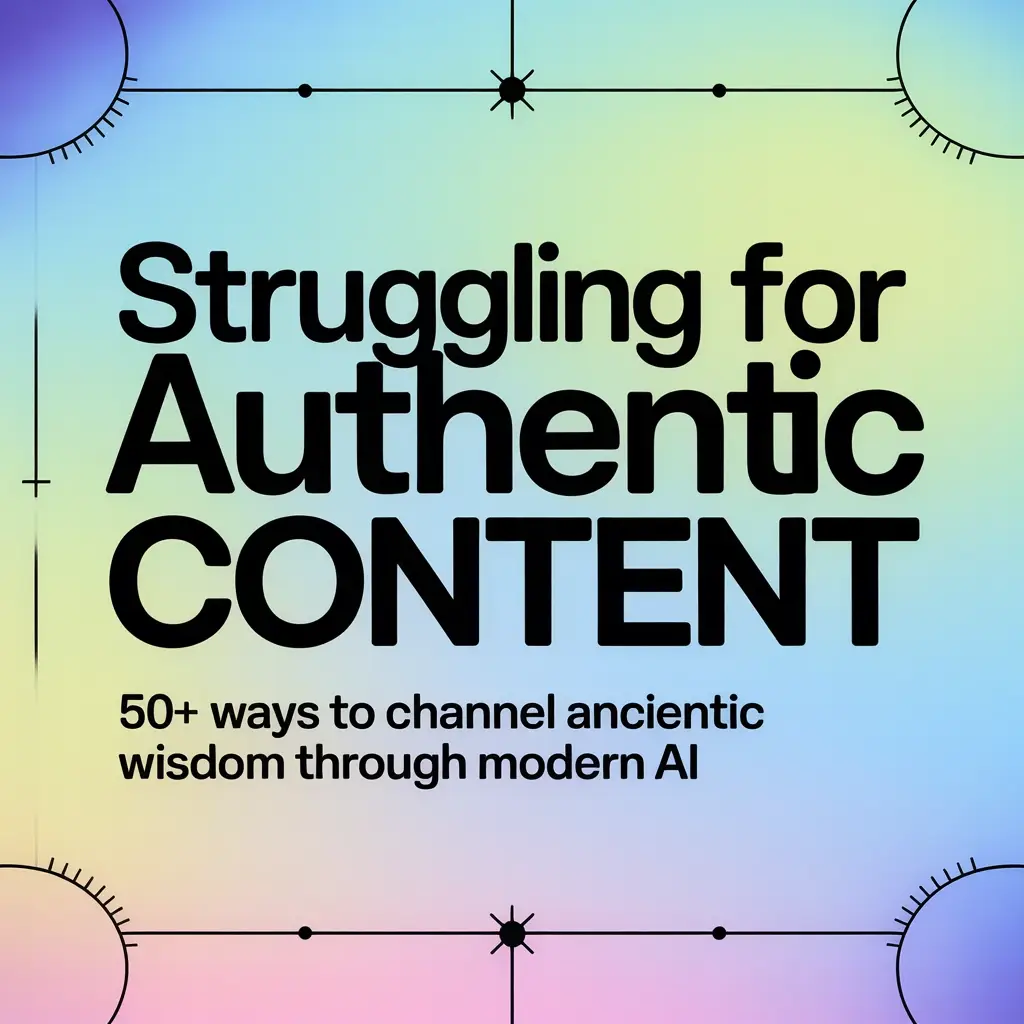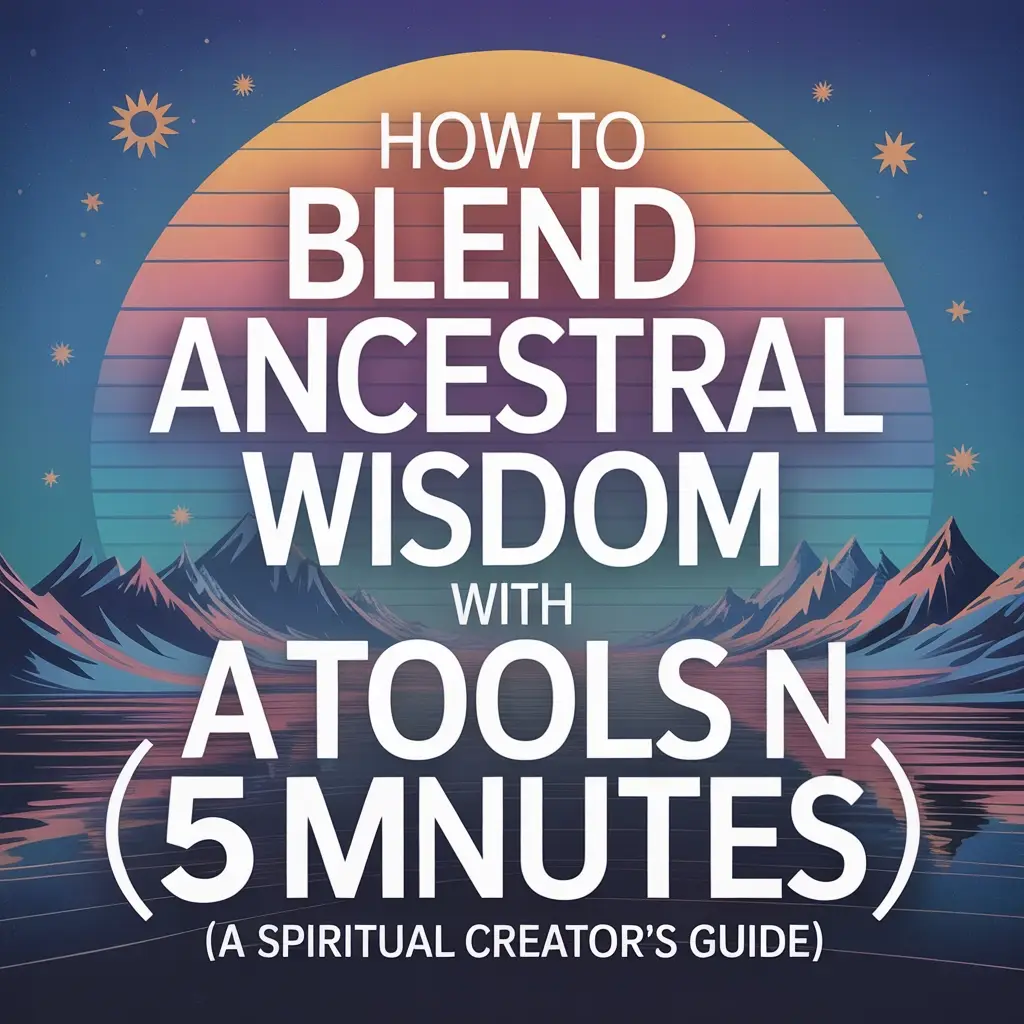The spiritual tech industry is booming. From brain-sensing headbands to neurofeedback meditation apps, technology promises to hack your way to enlightenment faster than ever before. But here's the thing: speed might be exactly what's wrong with this approach.
Spirit-tech encompasses brain-based technologies designed to enhance spiritual experiences. Think Muse headbands that monitor your brain waves during meditation, neurofeedback systems that guide you into specific mental states, and apps that gamify your spiritual practice with achievement badges and progress tracking.
The pitch sounds compelling: Why struggle with years of traditional practice when technology can optimize your path to inner peace?

The problem with optimizing the sacred
Traditional spiritual growth operates on a different timeline than Silicon Valley innovations. Ancient practices developed over millennia weren't designed for efficiency metrics or quarterly growth targets. They were built around something spirit-tech fundamentally misunderstands: the transformative power of struggle.
When you meditate without technological assistance, you encounter resistance. Your mind wanders. You feel restless. You question whether you're doing it right. These aren't bugs to be fixed: they're features of the spiritual journey.
Spirit-tech treats these challenges as problems requiring technological solutions. Can't focus? Here's a brain-sensing device to guide you back to attention. Struggling with consistency? Try this app with streak counters and reminder notifications.
But spiritual growth isn't about eliminating difficulty. It's about developing a different relationship with difficulty.
Creating dependency instead of independence
Most spirit-tech marketing includes some version of "eventually you'll do it on your own." The technology positions itself as training wheels for spiritual practice. Remove them once you've learned to balance, and you're free to ride solo.
This analogy breaks down when you consider what meditation actually develops. Unlike riding a bike: a mechanical skill with clear success markers: spiritual practice cultivates internal resources that strengthen through repeated exposure to challenges.

When external devices provide the feedback and guidance traditionally developed through internal awareness, practitioners may never build those internal muscles. They become dependent on technological crutches that were supposed to be temporary supports.
Consider this: If you always rely on GPS navigation, you never develop your own sense of direction. If you always use spell-check, your spelling doesn't improve. If you always need a device to tell you when you're focused, do you ever develop the ability to recognize focus on your own?
The commodification trap
Spirit-tech exists within venture-funded companies that need to show returns to investors. This creates inherent tension between spiritual values and business objectives.
Traditional spiritual practices emerged from communities focused on wisdom cultivation, service, and inner development. Modern spirit-tech emerges from communities focused on user acquisition, engagement metrics, and market expansion.
These different contexts create different priorities. A meditation teacher might emphasize patience, surrender, and non-attachment. A meditation app might emphasize progress tracking, achievement unlocking, and social sharing features.
The shift from practice to product changes the fundamental nature of the spiritual experience. Instead of cultivating contentment with whatever arises, practitioners learn to optimize for specific outcomes. Instead of developing equanimity, they chase peak experiences and measurable improvements.

Missing the integration piece
Spiritual growth isn't primarily about what happens during formal practice sessions. It's about how insights from practice integrate into daily life, relationships, and decision-making.
A 20-minute technologically-enhanced meditation might produce profound feelings of connection or clarity. But without the gradual character development that comes from sustained practice through life's ups and downs, these experiences remain isolated peaks rather than integrated wisdom.
Traditional spiritual paths include guidance on ethical living, community involvement, and service to others. They recognize that genuine spiritual development requires working with real-world challenges like conflict, loss, responsibility, and moral complexity.
Spirit-tech focuses primarily on individual experience optimization. The technology can enhance your personal meditation session, but it can't help you navigate a difficult conversation with your partner or make ethical decisions at work. These applications require the kind of wisdom that develops through lived experience, not technological enhancement.
The neurodiversity question
Spirit-tech proponents argue that technology democratizes meditation by making it accessible to people who struggle with traditional approaches. This includes individuals with ADHD, anxiety disorders, or other neurodivergent conditions that make sustained attention challenging.
This accessibility argument has merit. If technology helps someone establish a meditation practice who otherwise couldn't, that's genuinely valuable. The question becomes whether technological assistance leads toward or away from long-term spiritual development.

The answer likely depends on how the technology is positioned and used. As a bridge toward unassisted practice for people who need extra support? Potentially helpful. As the primary method for spiritual development? More problematic.
What genuine spiritual growth requires
Authentic spiritual development involves several elements that resist technological optimization:
Patience with uncertainty. Spiritual growth happens on its own timeline, often involving long periods where progress feels invisible or nonexistent. Learning to trust this process requires developing patience that can't be technologically accelerated.
Comfort with discomfort. Growth happens at the edge of our comfort zones. Technology that makes practice too comfortable may inadvertently prevent the psychological stretching necessary for development.
Surrender of control. Many spiritual traditions emphasize letting go of the need to direct outcomes. Spirit-tech, with its focus on optimization and measurement, may reinforce the controlling mindset that spiritual practice aims to soften.
Community wisdom. Traditional spiritual development happens within communities that provide guidance, accountability, and perspective. Technology can connect people virtually, but it can't replicate the full-spectrum human wisdom that emerges from in-person spiritual communities.
Finding balance
This doesn't mean all spirit-tech is inherently problematic. Technology can serve spiritual development when positioned appropriately. Meditation apps can introduce practices to new audiences. Biofeedback devices can help people understand their nervous system responses. Online communities can connect isolated practitioners.
The key is recognizing technology as a potential tool within a broader spiritual life, not as the primary path to spiritual growth.

If you're drawn to spirit-tech, consider these questions: Does this technology increase or decrease your capacity for inner self-regulation? Does it deepen your relationship with mystery and uncertainty, or does it reinforce the need for control and measurement? Does it connect you more deeply with others and with life itself, or does it turn spiritual practice into another form of personal optimization?
The most profound spiritual transformations often happen not when we're trying to optimize our experience, but when we're learning to be fully present with whatever experience we're actually having. Technology can enhance many aspects of human life, but presence itself may be the one thing that can't be hacked.
Perhaps the real question isn't whether spirit-tech works, but whether the kind of spiritual development it produces is the kind we actually need. In a world already dominated by technological solutions, maybe the most radical spiritual practice is learning to sit quietly, without devices, in our own unenhanced humanity.



